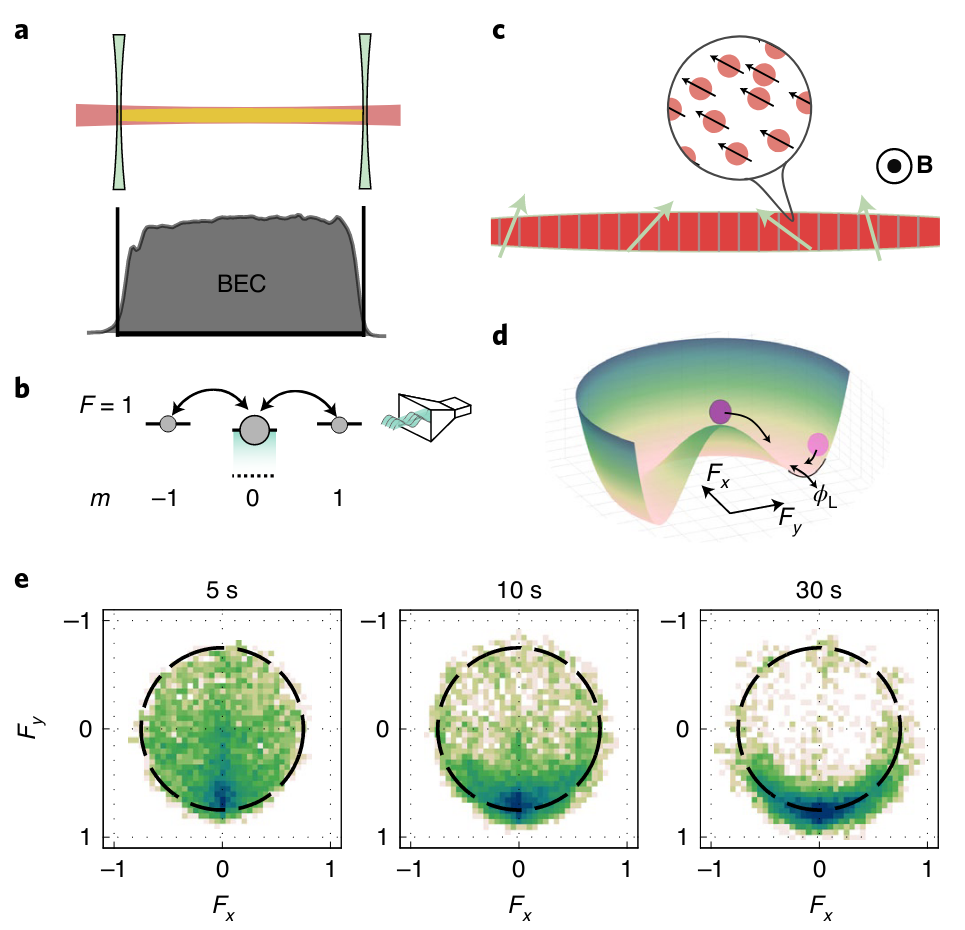Newsroom
 Homogeneous spinor Bose gas and easy-plane ferromagnetic properties. Reproduced from Prüfer, M., Spitz, D., Lannig, S. et al. (2022), Nature Physics, Fig. 1. For details about panels (a) to (e), please refer to the caption in this publication.
Homogeneous spinor Bose gas and easy-plane ferromagnetic properties. Reproduced from Prüfer, M., Spitz, D., Lannig, S. et al. (2022), Nature Physics, Fig. 1. For details about panels (a) to (e), please refer to the caption in this publication.STRUCTURES scientists have experimentally demonstrated twofold superfluidity and dynamical thermalization in an ultracold ferromagnetic spinor Bose gas of Rubidium atoms.
Bose-Einstein condensates form an ideal ground to explore dynamical phenomena emerging in the many-body limit. Due to their rich internal structure spinor condensates give rise to intricate symmetry breaking and superfluidity features. Superfluids can flow without dissipation and are an example of a macroscopic system dominated by quantum physics. The equilibrium state of the spin-1 gas at ultralow temperatures exhibits a dual condensate in the “easy-plane” ferromagnetic phase. This is a form of matter in which all atoms show phase coherence over the whole extent of the system in both density and spin. The direct observation of this dual state has previously been challenging due to access to only short timescales or limited experimental control. In a recent experiment carried out by the group of Markus Oberthaler at the Kirchhoff Institute for Physics (KIP) in collaboration with Daniel Spitz and Jürgen Berges from the Institute of Theoretical Physics (ITP) it has been prepared and thoroughly probed for the first time. The quantum gas could be stored long enough to observe the system’s evolution towards its equilibrium state, as well as to demonstrate the emergence of long-range coherence and spin-superfluidity. The new methods and results are an important step towards understanding quantum many-body dynamics and thermalization in large magnetic spin systems.
Link to the associated publication in Nature Physics:
Prüfer, M., Spitz, D., Lannig, S. et al. Condensation and thermalization of an easy-plane ferromagnet in a spinor Bose gas. Nat. Phys. (2022). https://doi.org/10.1038/s41567-022-01779-6.
